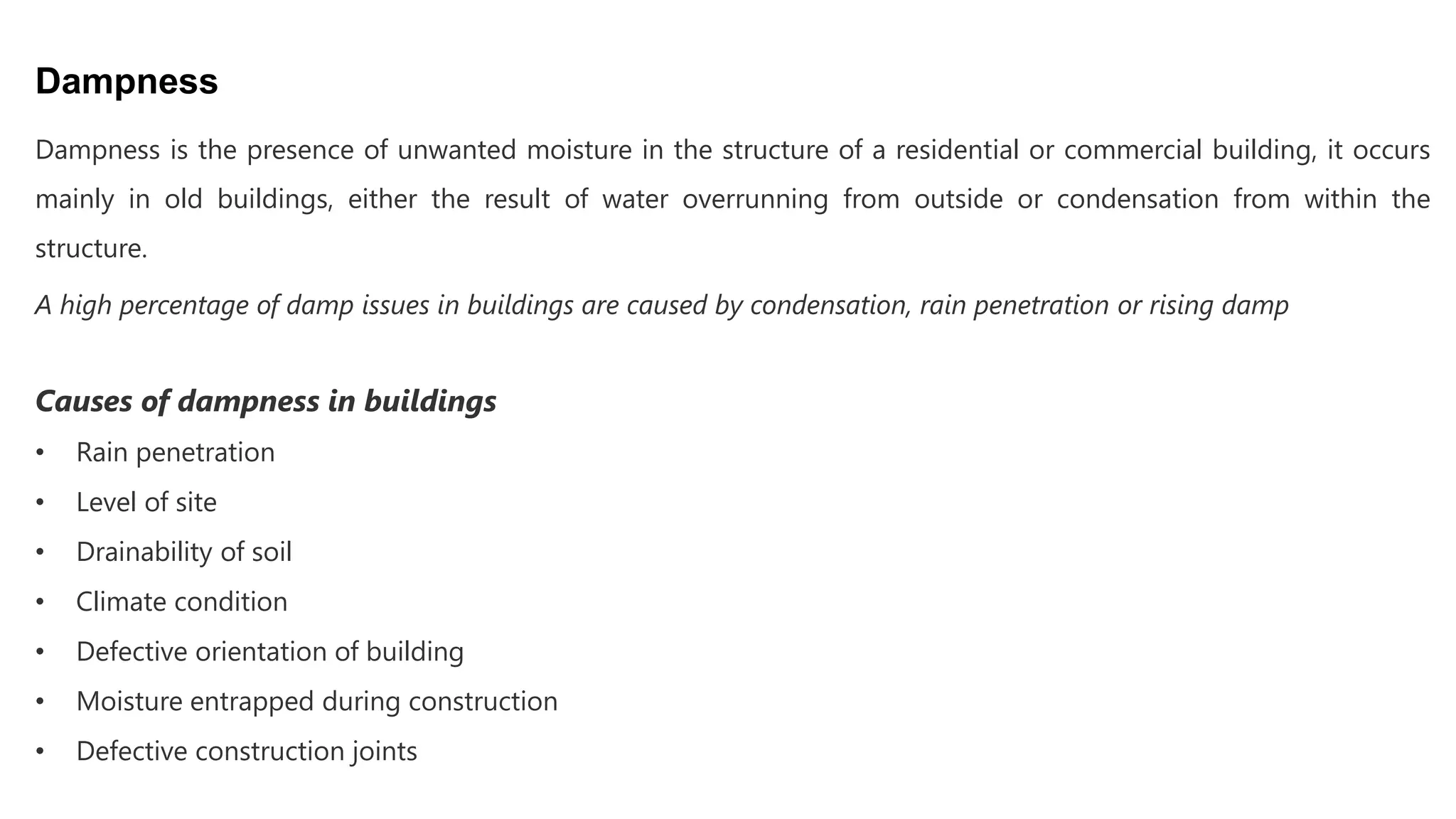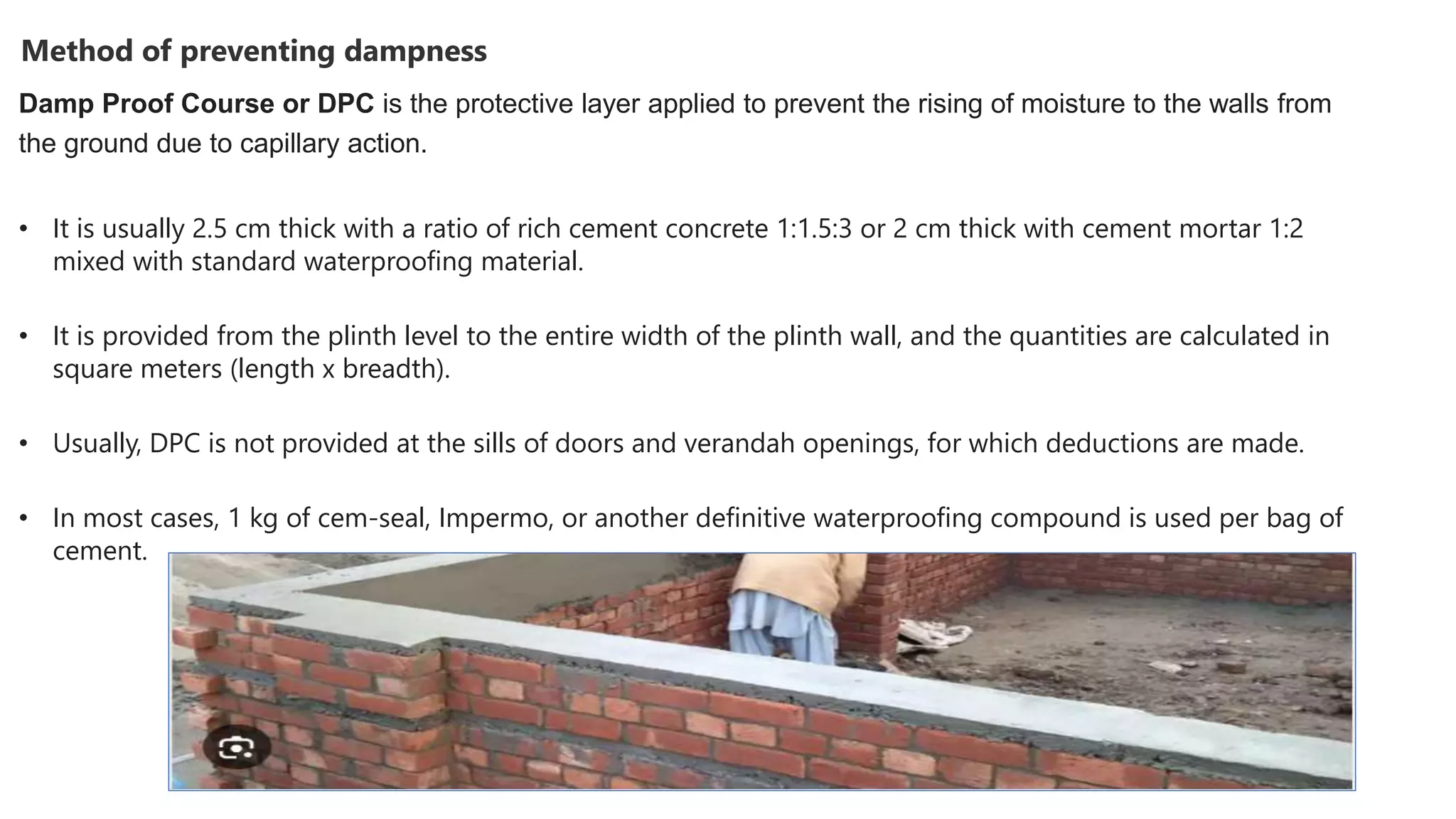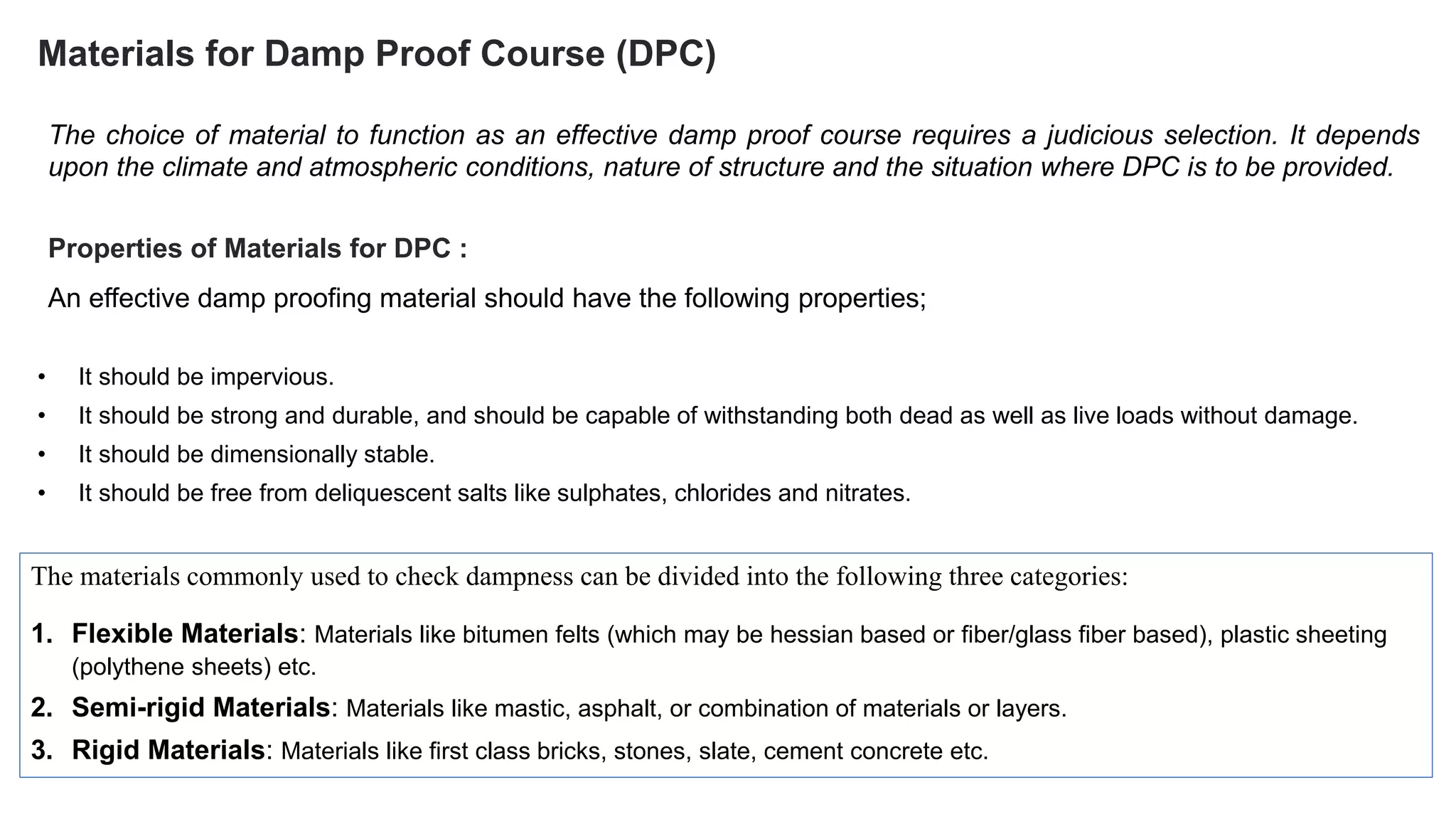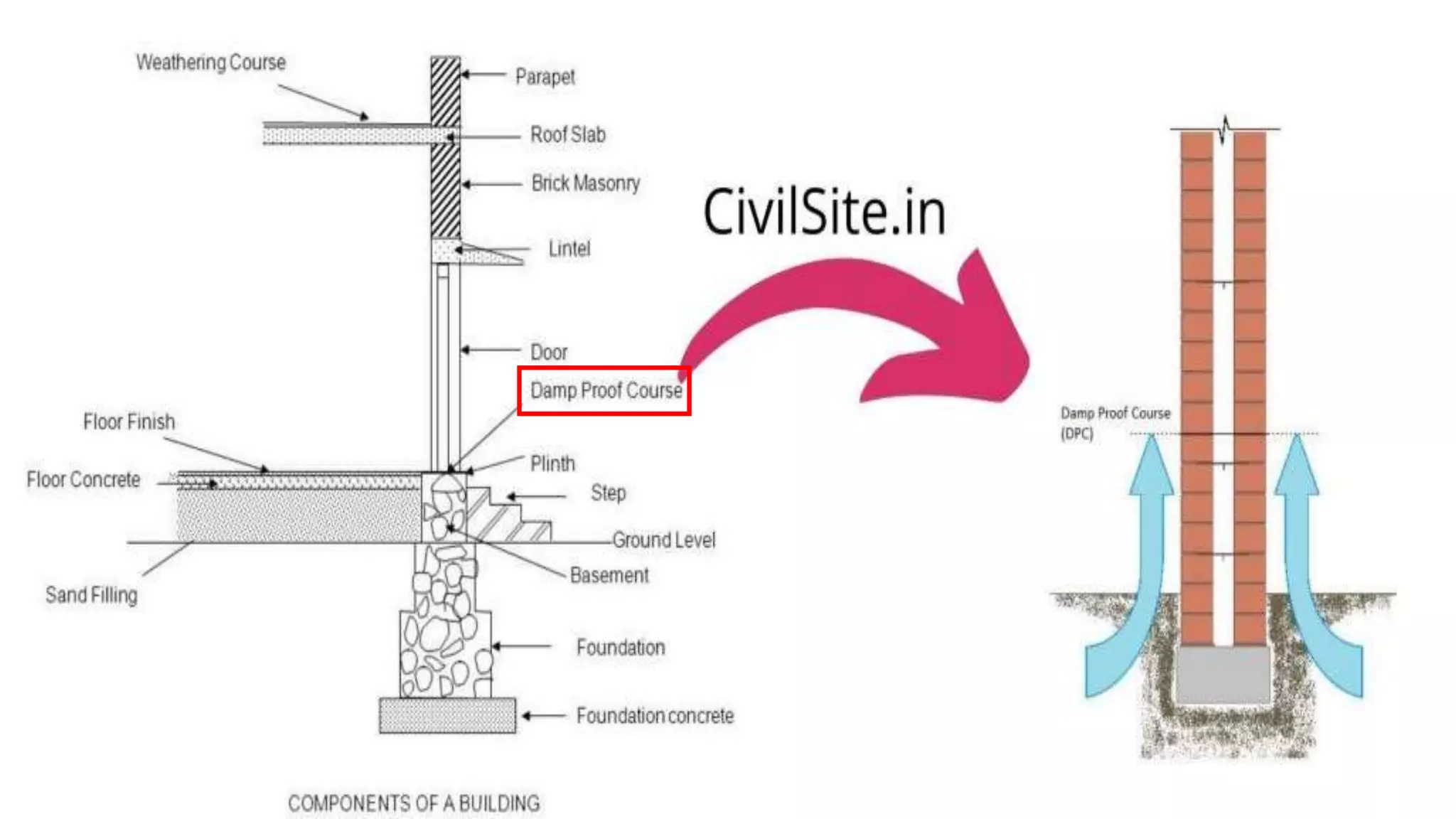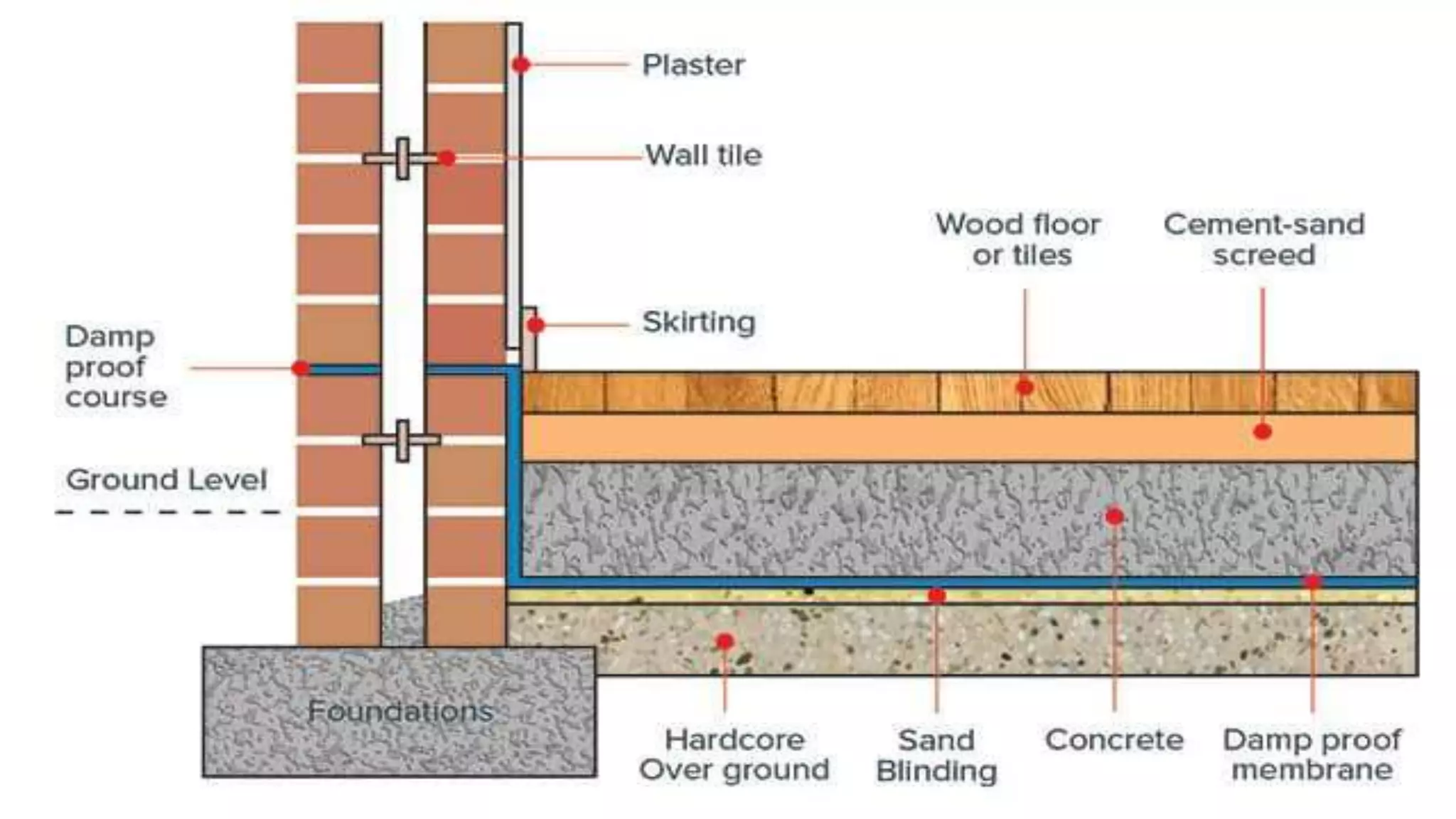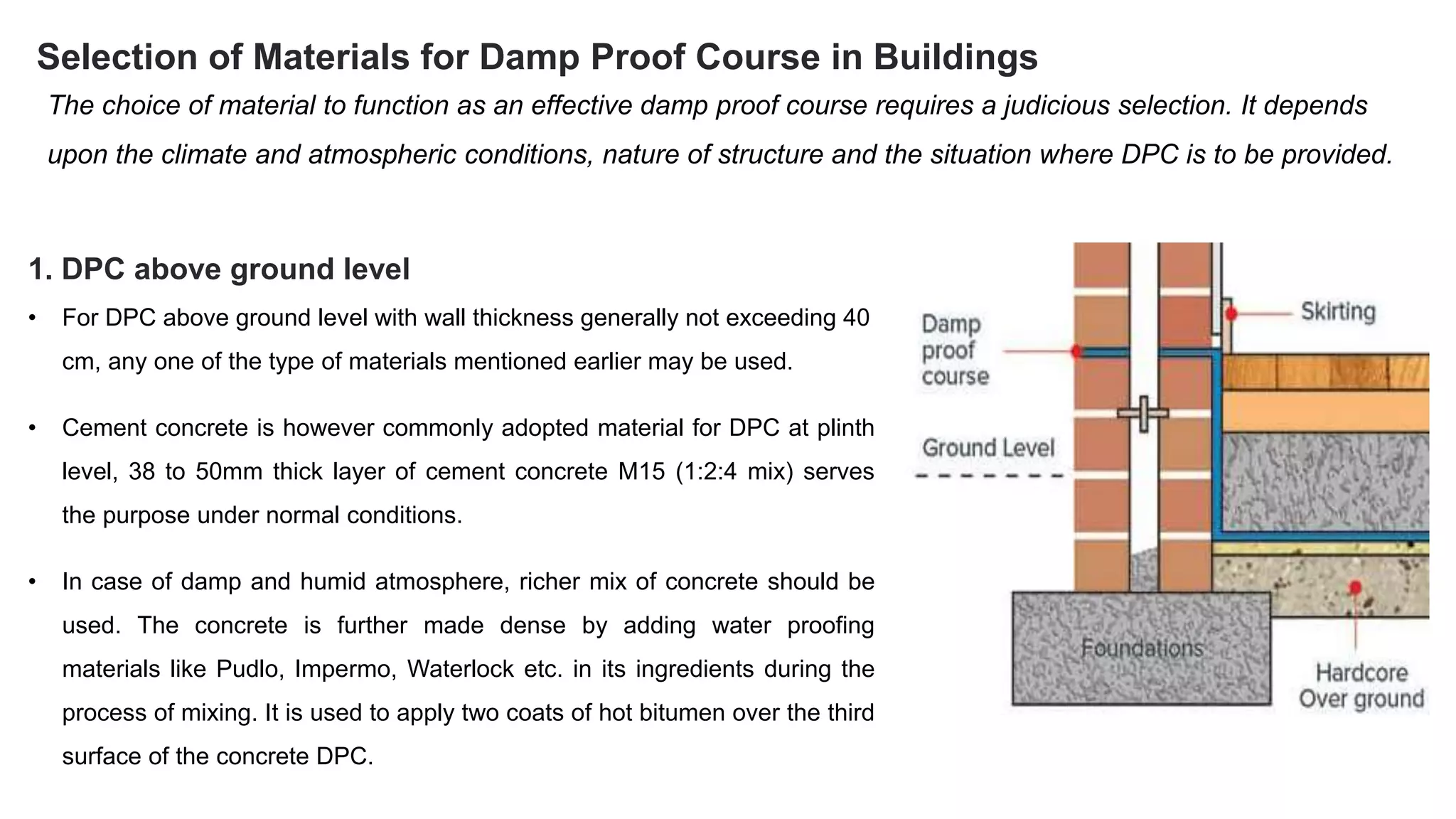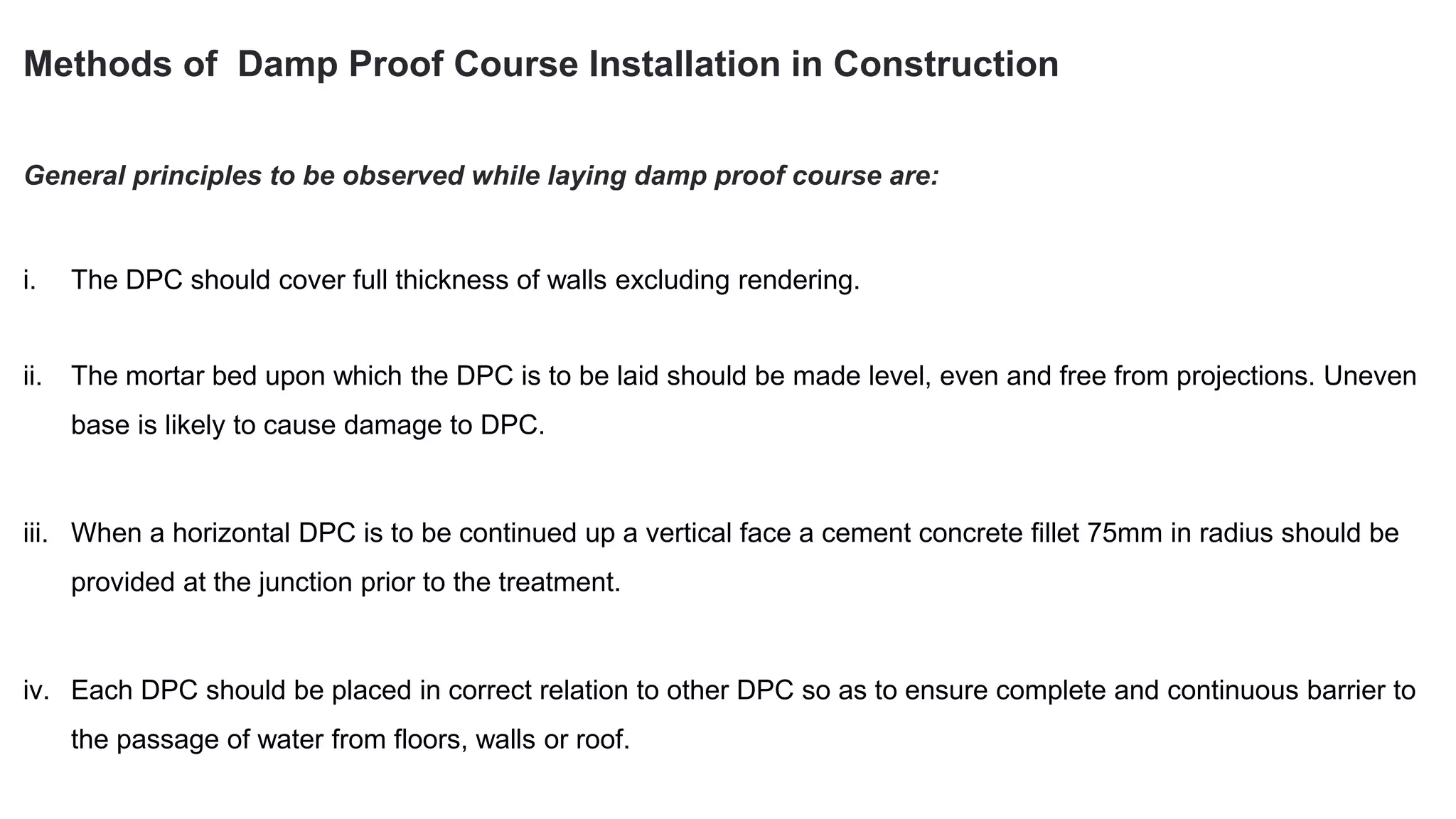Dampness occurs in buildings mainly due to condensation or water penetration from outside. It can cause damage to structures and health issues for occupants. Damp proof courses made of materials like concrete, bitumen, or plastic sheeting are used to prevent rising damp from the ground. The appropriate material depends on factors like climate, structure, and location. Common installation methods include using a cement concrete damp proof course at the plinth level and flexible materials like felt for floors or roofs. Proper installation techniques help ensure a continuous barrier against moisture.
